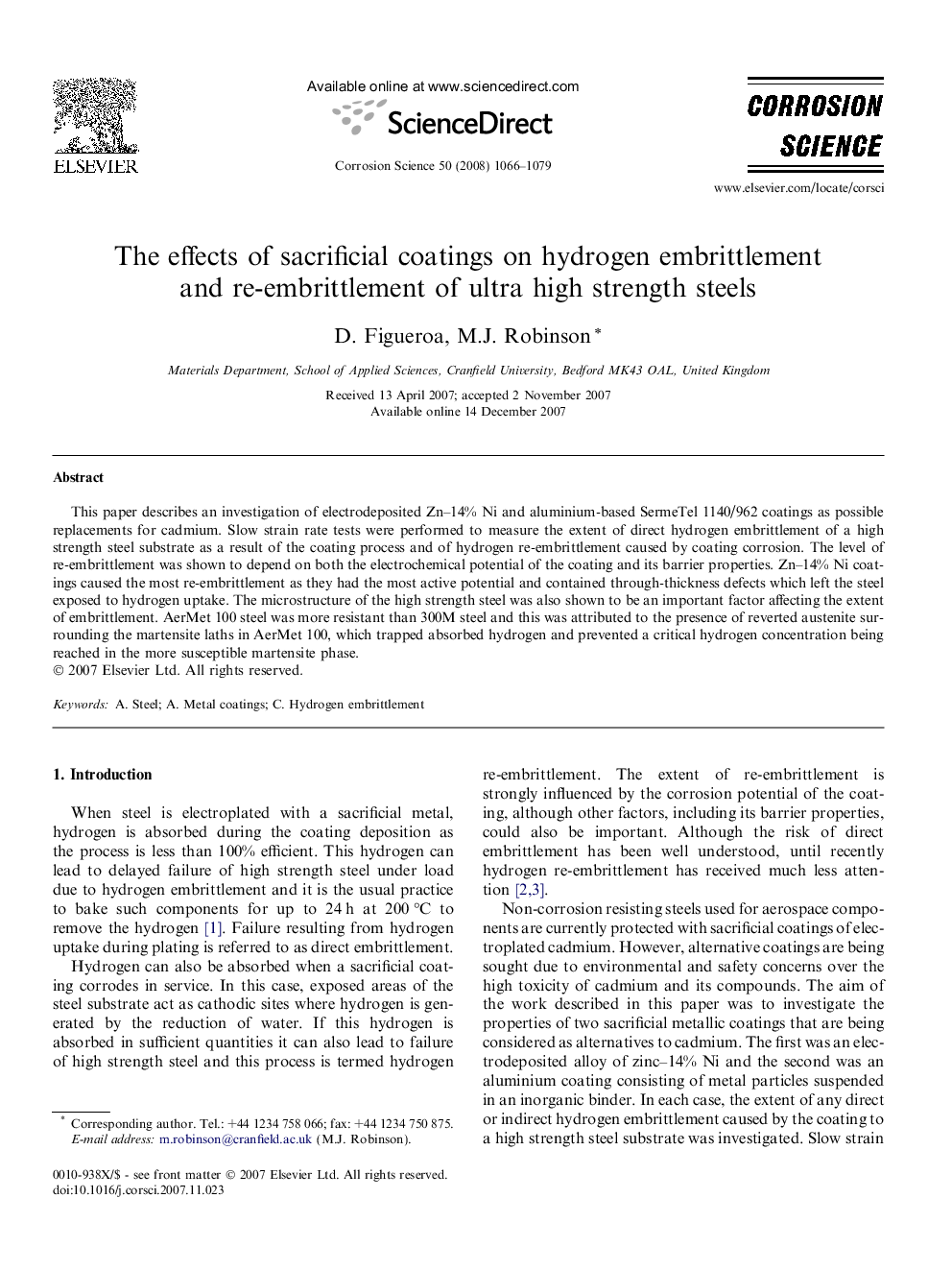| Article ID | Journal | Published Year | Pages | File Type |
|---|---|---|---|---|
| 1471931 | Corrosion Science | 2008 | 14 Pages |
This paper describes an investigation of electrodeposited Zn–14% Ni and aluminium-based SermeTel 1140/962 coatings as possible replacements for cadmium. Slow strain rate tests were performed to measure the extent of direct hydrogen embrittlement of a high strength steel substrate as a result of the coating process and of hydrogen re-embrittlement caused by coating corrosion. The level of re-embrittlement was shown to depend on both the electrochemical potential of the coating and its barrier properties. Zn–14% Ni coatings caused the most re-embrittlement as they had the most active potential and contained through-thickness defects which left the steel exposed to hydrogen uptake. The microstructure of the high strength steel was also shown to be an important factor affecting the extent of embrittlement. AerMet 100 steel was more resistant than 300M steel and this was attributed to the presence of reverted austenite surrounding the martensite laths in AerMet 100, which trapped absorbed hydrogen and prevented a critical hydrogen concentration being reached in the more susceptible martensite phase.
